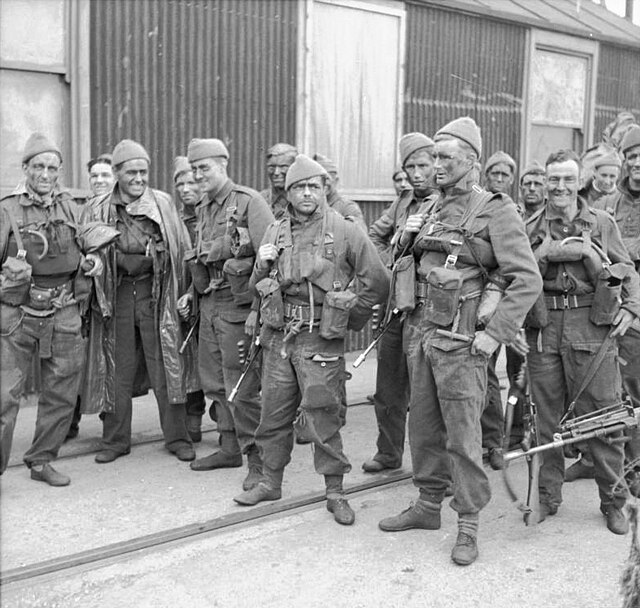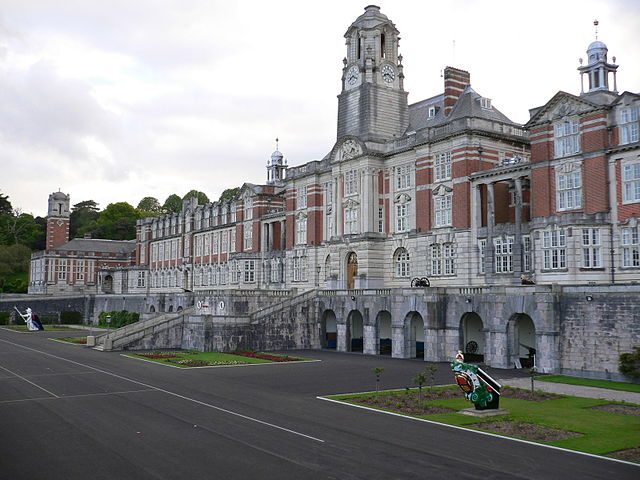The British Armed Forces are the military forces responsible for the defence of the United Kingdom, its Overseas Territories and the Crown Dependencies. They also promote the UK's wider interests, support international peacekeeping efforts and provide humanitarian aid.
A modern reproduction of an 1805 poster commemorating the Battle of Trafalgar
Soldiers from the Royal Irish Rifles in the Battle of the Somme's trenches 1916
British commandos during the Second World War
The Vulcan Bomber was the mainstay of Britain's airborne nuclear capability for much of the Cold War.
The Royal Navy (RN) is the naval warfare force of the United Kingdom, British Overseas Territories and Crown Dependencies, and a component of His Majesty's Naval Service. Although warships were used by English and Scottish kings from the early medieval period, the first major maritime engagements were fought in the Hundred Years' War against France. The modern Royal Navy traces its origins to the early 16th century; the oldest of the UK's armed services, it is consequently known as the Senior Service.
A late 16th-century portrait of the Spanish Armada battling Royal Navy warships
HMS Victory, Nelson's flagship at Trafalgar, is still a commissioned Royal Navy ship, although she is now permanently kept in dry-dock.
HMS Warspite and Malaya, seen from Valiant at the Battle of Jutland
Britannia Royal Naval College in Dartmouth, Devon








